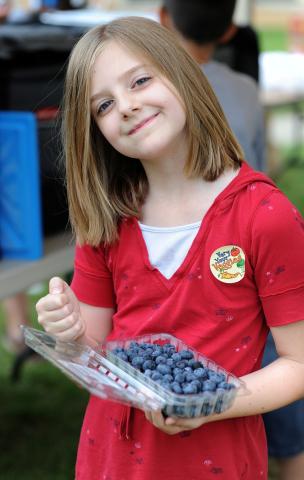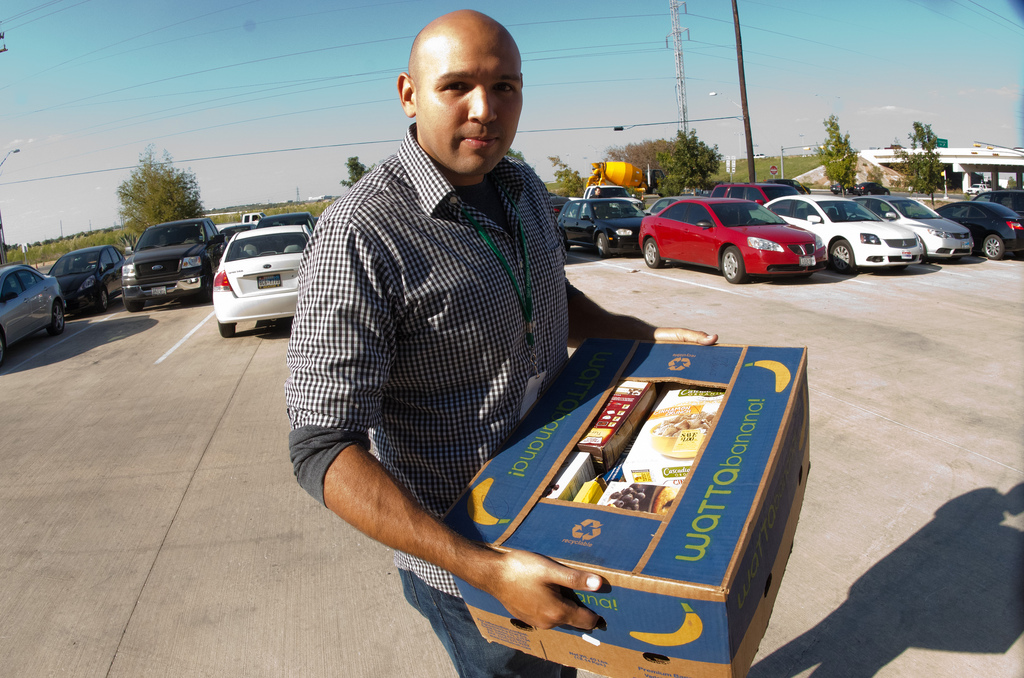
Banking on Health: Improving the Inventory at Food Banks
“I have the audacity to believe that peoples everywhere can have three meals a day for their bodies, education and culture for their minds, and dignity, equality and freedom for their spirits,” explained Dr. Martin Luther King Jr. in 1964. Fast-forward to today, and for too many families, the idea of having three meals a day remains an audacious, out-of-reach goal. In fact, 2013 saw one of the highest levels of food insecurity—a lack of access to affordable, nutritious food—since the United States Department of Agriculture first began collecting this information in 1995. Last year, approximately 17 million American households experienced food insecurity.
This is on my mind as we move into the month of November and my family starts making plans for Thanksgiving. For my family, Thanksgiving is more than a holiday during which we cook and eat good food; it’s also a time for us to express gratitude for having good food to cook and eat. Like many people across the country, we try to donate time, money, or food to local food banks as a way of both giving back and helping get good food to those who need it most.
For families dealing with food insecurity, food banks serve as a lifeline year-round. Following the economic recession of the late 2000s, food banks have become an important resource for an increasing number of Americans. They serve the most vulnerable members of communities, many of whom are at high risk for diet-related chronic health conditions. Both adults and children who experience food insecurity have poorer diets than the general population, and they are more likely to be overweight or obese.
Recognizing the connection between good food and good health, many food banks are taking steps to collect and distribute food of better nutritional value. A 2012 study of 137 food banks across the nation showed that more than half of the food banks surveyed had healthy nutrition standards for food and beverages. These standards focus on eliminating certain unhealthy products, such as candy or sugary drinks, from food banks’ inventories.
The Alameda County Community Food Bank (ACCFB) is a leader on this issue. Although Alameda County is located in the wealthy San Francisco Bay Area, many of its residents live in poverty. With more than one in five county residents struggling with obesity and 16 percent of residents identifying as food insecure, the county is no stranger to obesity and food insecurity. In 2005, the ACCFB became the first food bank in the nation to ban the distribution of soda and other sugary drinks. After years of planning and education, the food bank’s board approved a broader nutrition policy in 2013 that included standards for both beverages and food.
These successes did not come without challenges. “Food banks really have two goals that can be hard to balance,” notes Jenny Lowe, ACCFB’s nutrition education manager. “The first goal is to feed people, and the second goal is to provide good nutrition to people.” Some staff members and stakeholders worried that the policy would require them to turn away food that, although not nutritious, could fill empty bellies and alleviate hunger. However, over time, the ACCFB nutrition team overcame these concerns. Lowe sums it up: “The Alameda County Community Food Bank has had a long-standing commitment to good nutrition. This policy formalizes that commitment so staff, stakeholders, and clients are on the same page.”
Food banks like the ACCFB play a critical role for millions of families on Thanksgiving Day—and every other day of the year. Although Dr. King’s “three meals a day” may remain an ideal, food banks are moving toward that ideal by taking on the difficult—but immensely important—twofold task of providing food to the hungry and improving the health of vulnerable populations.
In the interest of full disclosure: I have never actually tried to cook a whole Thanksgiving meal. My contribution to our family potluck is mashed potatoes—not even mashed potatoes and gravy, just mashed potatoes. And given the “mashed potato disasters” that I’ve been involved in during Thanksgivings past, it’s probably a good thing my role in our Thanksgiving dinner is a small one. As I head to the store to pick up potatoes this year, in the spirit of Thanksgiving, I’m planning on picking up a few healthy items to donate to my local food bank, as well.
To learn more about nutrition policies in food banks, see Banking on Health, a fact sheet developed by CA4Health and ChangeLab Solutions.
(Photo credit: USDA via Flickr CC; some changes were made to the photos.)


The views and opinions expressed in this post are those of the author(s) and do not necessarily reflect those of MomsRising.org.
MomsRising.org strongly encourages our readers to post comments in response to blog posts. We value diversity of opinions and perspectives. Our goals for this space are to be educational, thought-provoking, and respectful. So we actively moderate comments and we reserve the right to edit or remove comments that undermine these goals. Thanks!